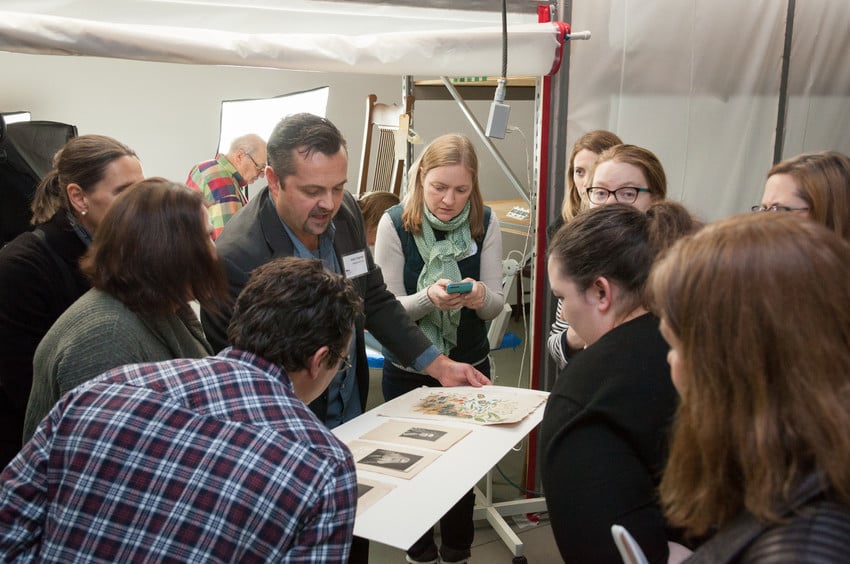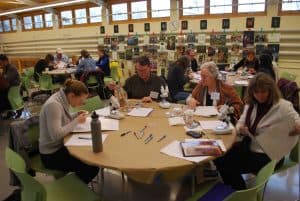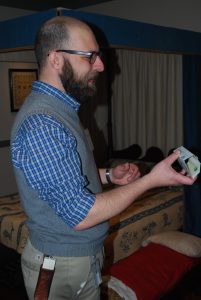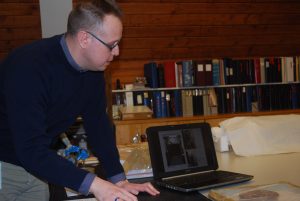On November 16, Historic New England’s Haverhill, Massachusetts-based collection services team hosted a sold-out program on Integrated Pest Management (IPM) for museum professionals, interested members, and colleagues from all over New England.
 The presentations featured entomologist Pat Kelley, vice president of Insects Limited, LLC, and Adam Osgood, collections technician for Historic New England. Pat presented a fascinating look at the history of IPM and its application in museum settings. He followed that with a riveting, up-close summary of our top insect pests, their behavior, and the damage to watch for, using real specimens, microscopes, and an identification quiz.
The presentations featured entomologist Pat Kelley, vice president of Insects Limited, LLC, and Adam Osgood, collections technician for Historic New England. Pat presented a fascinating look at the history of IPM and its application in museum settings. He followed that with a riveting, up-close summary of our top insect pests, their behavior, and the damage to watch for, using real specimens, microscopes, and an identification quiz.
Adam’s presentation covered the new IPM initiatives that Historic New England implemented this season, including increased staff time, innovative strategies, and the testing of new products. Many of these new efforts were inspired by what Adam learned at the International IPM Conference held at the Louvre Museum in Paris in September 2016.
These experimental initiatives include an “IPM Champion” program, in which pheromone trap monitoring and data consolidation are used to identify pest activity, along with targeted, informed cleaning to remediate the problem. Historic New England designated staff who were trained in IPM practice, proper collection handling, and preventive conservation of objects to execute this program.
Another innovative tactic Adam tested this season was the use of insecticide-impregnated mosquito netting as a barrier against museum pests. This technology is used effectively on a global scale in developing nations to control mosquito-borne illnesses. Early results from the netting combined with entomological lab testing by Pat Kelley show great potential against museum pests. Historic New England’s findings on this material represent the first documented effective use of the product for this purpose in the United States and probably the first successful application against wood-boring beetle species internationally.
The program also included three small-group breakout sessions. Nicole Chalfant, collection manager for Historic New England, gave a behind-the-scenes look into our collection storage, highlighting parts where IPM is challenging. Pat ran a workshop on trap monitoring, and Adam led a tour of the Controlled Atmosphere Treatment facility including an up-close look at actual collection items with pest damage.
The capacity crowd of fifty was lively and engaged, affirming that Historic New England remains a leader in IPM for the region.
This information is re-posted from the Historic New England Blog with permission




